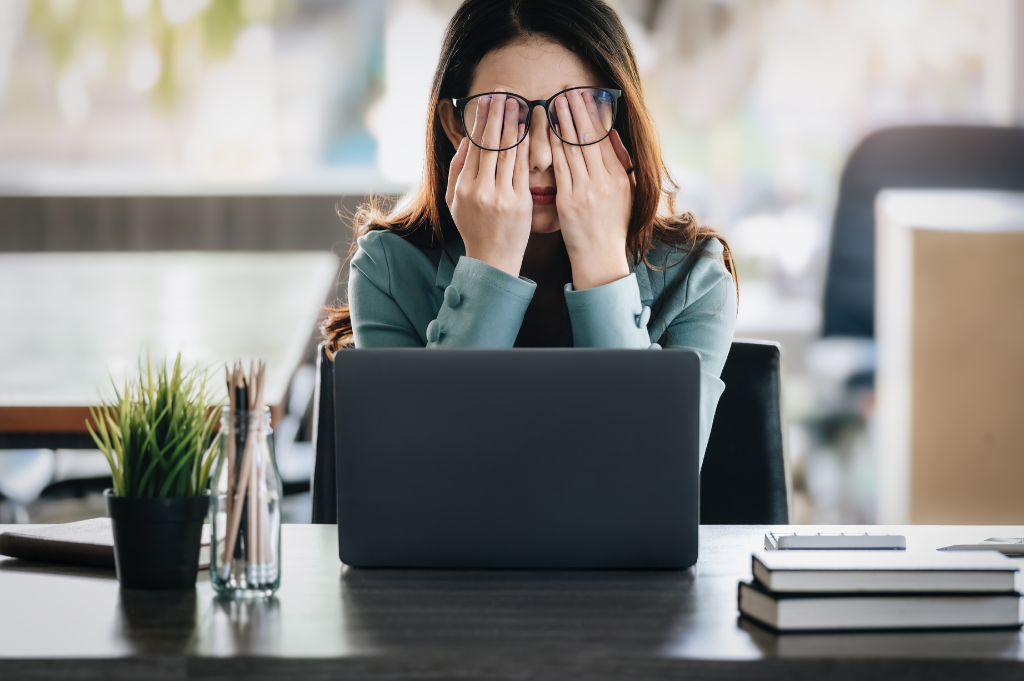As this year comes to an end, those of us in Hong Kong are facing mixed emotions. Primary among these may likely be burnout. Emotional burnout, depletion of compassion, and a decreased sense of accomplishment – if any of that sounds familiar, I want you to rest easy that you are not alone.
Burnout is usually used in the context of a work setting. It’s a psychological syndrome emerging as a prolonged response to chronic interpersonal stressors on the job. Herbert Freudenberger coined the term in 1975, defining it through three components:
1. emotional exhaustion—the fatigue that comes from caring too much and for too long;
2. depersonalisation—the depletion of empathy, caring, and compassion; and
3. decreased sense of accomplishment—an unconquerable sense of futility: feeling that nothing you do makes any difference.
However, job-related stress has not been what’s caused many of my clients to come into my therapy room suffering from burnout in 2022. Emotional exhaustion happens when we get stuck in an emotion and can’t see a light at the end of the tunnel. Beyond what may be going on in our personal lives, by simply living in Hong Kong, we’ve all been exposed to a continuous sense of uncertainty arising from political and Covid management health policies for almost 3.5 years.
We are all suffering from extended pandemic fatigue, and this prolonged exposure to threat has been emotionally, physically, and psychologically exhausting. Existing on high alert has been physically and mentally depleting: our sense of well-being and sleep has suffered, and many of us have lost a sense of basic safety, which has affected our capacity to relax. As the stressors around us has continued to increase, the toxic stress in our bodies has as well. So, it’s not surprising many of us are feeling an overwhelming sense of burnout.
Stress vs Stressors
3 types of stress
Normal Good Stress: A positive stress response is a normal stress response. It is infrequent, short-lived, and mild.
Tolerable Stress: Tolerable stress is more severe and serious, but is temporary.
Toxic Stress: Toxic stress results in prolonged activation of the stress response, with a failure of the body to recover fully.
Stress is the neurological and physiological response of the body when encountered by perceived threat. It’s an evolutionarily adaptive response that helped us survive from the threat of sabertoothed tiger. However, our stress response has not evolved over the centuries to differentiate the severity of threat. When the brain notices the potential threat of any “sabertoothed tiger”, it activates its stress response: a cascade of neurological and hormonal signals initiating physiological changes to help humans get ready to run from the tiger to survive.
Stressors are what activate the stress response in the body, often interpreted by our bodies as potential threats. They can be anything we see, hear, smell, touch, taste, or imagine could do us harm. There are external and internal stressors. External stressors may be things like work, money, family, time, societal pressures and expectations, experiences of discrimination, and the prolonged exposure to threat and uncertainty specific to Hong Kong. Internal stressors are less tangible. For example, our (often critical) inner dialogues, and our own thoughts and interpretations of the daily events.
However, just by addressing the cause of the stress doesn’t mean the biology of the stress response produced in the body has been addressed. Even once we’ve ‘killed the tiger’, our bodies are still full of stress: the hormones activated in the body are waiting for something to signal a sense of safety from the perceived threat for it to relax.
Managing Stressors and Chronic Stress
In our daily lives, most of us can problem solve and develop coping strategies to manage our stressors cognitively, however biologically our bodies are unconsciously accumulating stress. Learning to manage our body’s daily biological stress response is essential for our survival; just like breathing, sleeping and healthy eating. I don’t say this lightly, research studies over the past decade show stress is more likely to kill humans than their stressors.
Our bodies get stuck in the stress response when we are stuck in a stress-activating situation. This stress cycle is unhealthy when the stress outpaces our capacity to process it, which is how many of us have been feeling over the past year.
Strategies for dealing with Stress
Recognising the difference between stressors and stress
Stressors are different from stress. Simply recognising and dealing with our stressors by problem solving doesn’t deal with the accumulated biological stress that remains in our bodies.
Exercise
Physical activity is what tells your brain you have successfully survived the threat and now your body is a safe place to live. Physical activity is the single most efficient strategy for effectively managing the stress response cycle.
Deep Breathing
Deep, slow breaths down regulate the stress response—especially when the exhalation is long and slow and goes all the way to the end of the breath, so that your belly contracts. Most of you who know me will be familiar with 7/11 breathing (inhale for 7 counts and exhale for 11 counts) or the square breathing technique (inhale for 4 counts hold for 1 count exhale for 6 counts and hold for 1 count).
Positive Social Interaction
Casual friendly social interaction is the first external sign that the world is a safe place. When you buy a cup of coffee and say “hi” to the barista. This helps reassure your brain that the world is a safe, sane place, and normal human interaction is not dangerous.
Laughter
Laughing together, just reminiscing about the times when we laughed together increases relationship satisfaction. When we laugh, neuroscientist Sophie Scott says we use an “ancient evolutionary system that mammals have evolved to make and maintain social bonds and regulate emotions.” – Scott, “Why We Laugh.”
Walking/ journaling / finding a creative outlet all help in decreasing the biochemistry of stress in our bodies. Over the last few years, I have found real respite through mindful colouring. I’ll get my pencils and book out after dinner and spend time by myself and turn off all thoughts aside from patterns, colour themes, blending, and of course, staying within the lines 🙂
Spend thirty minutes doing anything that works for you: exercise, meditation, creative expression, affection, etc. Because our bodies experience stress every day, we have to build strategies to manage it every day. Make it a priority, like your life depends on it. Because it does.
With this I wish you all a peaceful, healthy, and manageable 2023 and I hope this time next year, we’re all feeling emotionally replenished and compassionate.
Article written by Dr Quratulain Zaidi
To find out more how therapy can help you achieve your full potential and improve your mental health, please book a consultation on (852) 2521 4668 or info@mindnlife.com.




